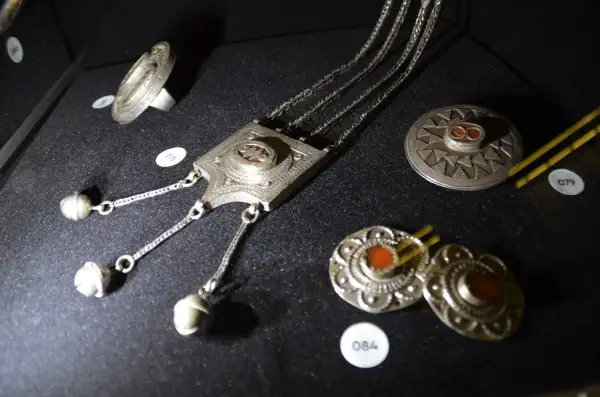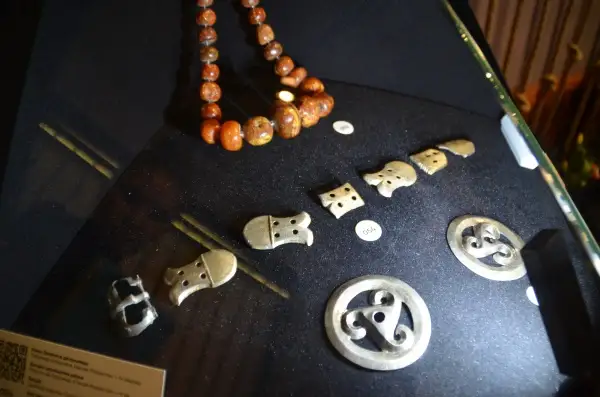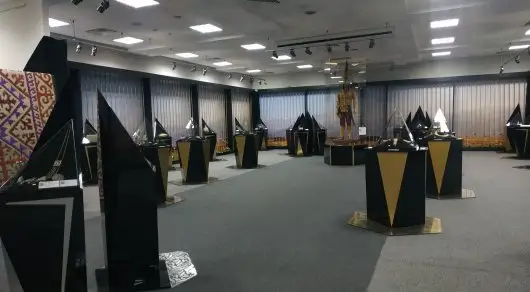'Golden Man' to be showcased in Tashkent

Director of the National Museum of the Republic of Kazakhstan Almaz Nurazkhan and Director of the Museum of Arts of Uzbekistan Vasila Fayzieva are taking part in the opening ceremony of the exhibition.
Before the opening of the exhibition, a press conference will be held, representatives of the official delegation of two countries, as well as Kazakh and Uzbek historians, will take part in the event.
The aim of the exhibition is to familiarize the foreign audience with the rich historical and cultural heritage of Kazakhstan. The exhibition will feature the symbol of the Republic of Kazakhstan - the "Golden Man".
In the late 1960s - early 1970s, an archaeological sensation occurred in the vicinity of Almaty: in the Issyk mound, which was investigated by the outstanding archaeologist Kemal Akishev, the remains of the Saka king, "Golden Man," who later became the symbol of Kazakhstan, were discovered. The priceless find was dubbed the "Kazakh Tutankhamen" and was recognized as the discovery of the century. 
For today, the project has been successfully implemented in Belarus, Azerbaijan, Russia, China, Poland, and the Republic of Korea.
The exhibition of the "Golden Man" was visited by over one million people in these countries. In general, the project will be implemented within three years, until the end of 2020, the exposition will be in about twenty countries of the world.
This year the exhibition is scheduled in the museums of Malaysia, Italy, Turkey, and Georgia. Next year it is planned to hold an exhibition in the museums of the USA, Austria, France, Switzerland, and Germany.
At the exhibition in the Museum of Arts of Uzbekistan you can see the reconstruction of the Golden Man in clothes embroidered with gold plaques, in a special conical headdress, which is decorated with golden plates in the form of golden arrows, snow leopards, argali, horses and birds, and a collection of archaeological Findings of the early Iron Age (5th - 4th centuries. BC.), accompanying the burial of this notable Saka young warrior (according to archaeologists his age is 17-18 years).
Sakas (translated from Persian means "mighty men") are the distant ancestors of the Kazakhs. In the writings of Greek authors, they are called Asian Scythians (the word saka goes back to the Scythian - "deer"), in other ancient sources they were figuratively described as "tours with the fastest horses".
Among the three large groups of these tribes were mentioned the Saka-Tigrahaud ("wildermen"), who lived in the territory where the Issyk mound was found with the burial of the "Golden Man".
More than four thousand gold items were found in the mound: details for decorating clothes, as well as decorations and household items. The topography of the objects in the burial has allowed the researchers, as a result of hard work, to recreate the look of an ancient warrior, which is presented at the exhibition.
The most important feature of the ancient art of the steppe is the dominance of zoomorphic images - the so-called "animal style", the distinctive features of which are the stylized images of totem animals, scenes of fighting animals, endowed with magical functions.
The drama plots symbolize the opposition of the elements and the revival to life, the confrontation between good and evil, the eternal movement and the eternal struggle of opposites. A striking example of "animal style" is a plaque, dating from the 5th-4th centuries BC., made of gold in the technique of stamping and corrugation in the form of two mirrored leopards.
As Christianity and Islam were established, the "animal style" gradually lost its original meaning, which goes back to pagan beliefs and ideas.
However, decorative images of animals, devoid of their original magical meaning, continued to exist in medieval art: in jewelry, book miniature, wood carving, stone, and bone, in architecture - but in a more generalized form, acquiring forms of stylized ornament, decorative elements. These trends are clearly expressed in the finds from the Sairam treasure, which are presented in the exhibition items of jewelry, dating from the 15th century.
A special place in the exposition is occupied by the silver bowl with the inscription made in the runic script found among the finds of the Mound of Issyk - one of the oldest written records found on this territory.
Also at the exhibition will be presented unique archaeological finds from Saks mounds Taksay (West Kazakhstan region), Taldy-2 (Karaganda region) and Berel (East Kazakhstan region).
In total, the exhibition features 106 items from the collections of the National Museum of the Republic of Kazakhstan.
The masterpieces of ancient and medieval art of Kazakhstan represented at the exhibition are only a small part of the works of the nameless masters of the past, reflecting the originality of the heritage of the Eurasian steppe culture.
A large influx of spectators is expected, including representatives of the scientific and creative intellectuals of the Republic of Uzbekistan.